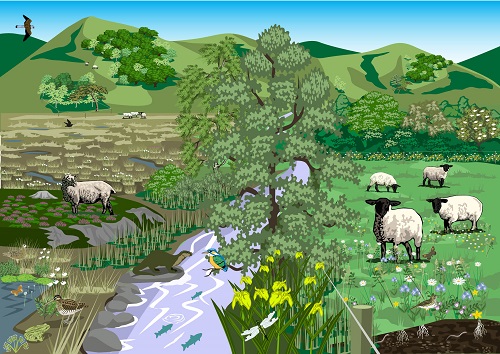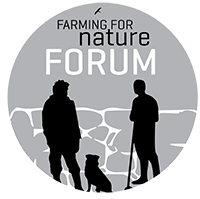Peatlands
Peatlands cover roughly 17.6% of the Irish landscape. When in good condition, they support a rich diversity of wildlife, can store and filter water and can act as major carbon sinks. Peatlands often form in poorly drained areas of high rainfall. There are two main types of peatland in Ireland: raised bogs and blanket bogs. Raised bogs are mainly found in the midlands whereas blanket bogs are mainly found in upland areas, especially along the west coast of Ireland.
Actions on the farm:
DRAINS & DAMS
In a healthy bog, water levels are generally at or near the surface year-round. If the bog is dry, it is an indication that the water levels have dropped. A dry bog can’t support the same level of biodiversity, so the water levels must be restored:
- Drains stop the bog from holding water and dry it out. This makes it a less suitable habitat for water-loving plants and animals. Block old manmade drains to rewet your bog!
- Dams installed along drainage ditches are a low-cost, easy method of rewetting the bog or wetland area. Dams can be made of plastic piling or of waterlogged, decomposed peat. While peat dams are cheaper, they are also generally less efficient dams than plastic piling and can only be used on narrower drains. For wide drains, plastic piling dams are more efficient.
REMOVE TREES FROM BOGS
Water tolerant trees such as alder and willow dry out sections of bog by absorbing the water through their roots. This drier bog can then be colonised by less water-tolerant trees, further drying out the bog and changing the habitat over time. As such, it is important to promptly remove trees from the bog to avoid damaging the sensitive bog habitat. However, on peatlands that have dried out and cannot feasibly be re-wetted, colonising trees may provide an interesting bog-woodland habitat and even create a valuable native woodland or scrubland over time.
AVOID OVERGRAZING
Where bogs are suitable for grazing, it is important to only graze the amount of livestock that the bog/peatland can support. Overgrazing, poaching and erosion can reduce the ability of the peatland to support both wildlife and livestock. The National Parks and Wildlife Service (NPWS), in association with the Dept. of Agriculture, Food and the Marine (DAFM), recommends a stocking level of 1 sheep per hectare. If feeding rings are present, moving them frequently can prevent poaching and nutrient enrichment.

See our Best Practice Guidelines on Peatland Management here
For more information on how to farm for nature, search by
SECTOR HABITAT SEASON FAQS
FURTHER RESOURCES EMAIL US ANY SUGGESTIONS

